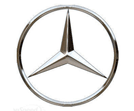Head of fleet Nick Andrews has set out an ambitious strategy for Mercedes-Benz: to be the top premium manufacturer in fleet for market share and sales, customer experience and retail profitability.
“Are we number one today?” he asked, rhetorically. “No, we’re not. But we have set
out our strategy to achieve this.”
Mercedes-Benz is going through a “product revolution” over the next few years, according to Andrews, beginning with the B-class which was launched earlier this year. A key priority was to reduce CO2 emissions.
In June, the C-Class is to undergo a change to the line-up. Replacing the SE, Elegance and Sport trim levels will be Executive SE, AMG Sport and AMG Sport Plus.
Equipment levels will be improved with, for example, the AMG Sport getting better alloys, day-time running lights and enhanced grille, but an effective price reduction of £960 over the outgoing Sport grade.
Mercedes-Benz intends to exploit the AMG brand more in its production descriptions, although Andrews conceded its usage would need to be “managed carefully”.
He added: “We have to increase the desirability of the brand and not have AMG be too exclusive, but we don’t want overkill.”
Andrews says the Executive SE, with its improved specification aligned to a minor £35 price increase, will have residual values £600 higher on average against the outgoing trim. He also expects the AMG badged cars to enjoy a residuals uplift.
Mercedes-Benz will launch the E-Class Hybrid at the end of the third quarter, with CO2 emissions of just 109g/km and fuel efficiency of 65.7mpg on the E300 Bluetech. This diesel hybrid will be available in saloon and estate and, says Andrews, has no reduction in luggage capacity over its diesel counterpart.
And in January 2013, it will launch the A-Class, with CO2 emissions from 99g/km.
The three A-Class model lines will include an AMG Sport.
















Login to comment
Comments
No comments have been made yet.